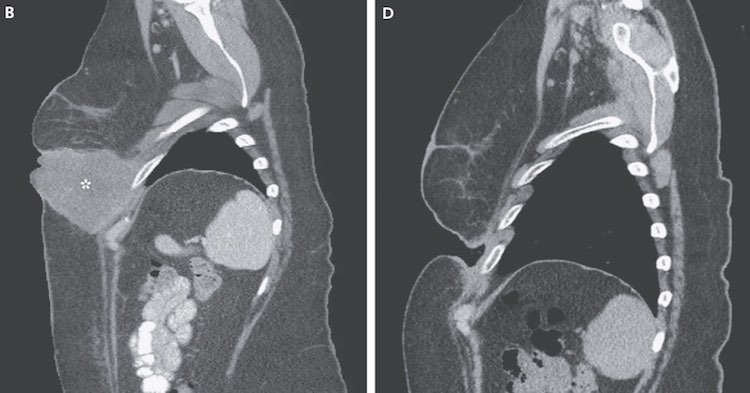An experimental drug combination dissolved a cancerous tumor so fast, it caught researchers completely off-guard. The two-drug combo completely eliminated a woman’s melanoma — and left her completely cancer-free — in just three weeks.
Researchers were surprised at how well the drug combination worked, shrinking tumors at least 80% in more than half of the 142 patients in the trial. And the combination completely eradicated tumors in 22% of patients.
In the rapid recovery case, a 49-year-old woman was given the drugs to treat a large tumor on her chest. Doctors continued to monitor her after the treatment and she remains cancer-free. (The image on the left shows the cancer mass with an asterisk* and the photo on the right is magnified)
“I was astonished; I’d never seen anything like that,” Dr. Paul Chapman, head of the melanoma section at the Memorial Sloan Kettering Cancer Center in New York told Live Science. “She said the tumor had just kind of dissolved.”
Chapman was lead author of the research report published in the New England Journal of Medicine about the trial, part of research needed for the FDA to approve combined use of the drugs.
The woman, and others in the trial, were treated with a process called immunotherapy — using drugs to boost a person’s own immune system to fight cancer. It’s a relatively new approach to treating deadly melanoma.
Ipilimumab allows the body to override part of the immune system, turning loose waves of immune cells to kill cancer cells. Nivolumab strengthens certain immune cells, called “T cells,” preventing them from dying and allowing them to continue attacking cancer longer.
Chapman says the tests confirm a suspicion doctors and researchers have had for a long time that the immune system can fight cancer. This research may open new doors in unleashing that potential.




















